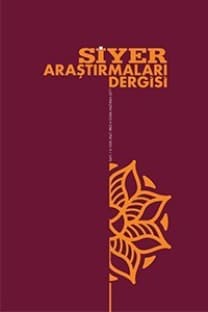İbn İshak’ın Sîre’si Özelinde Hz. Muhammed’in Risalet Öncesi Hayatı
Siyer, Hz. Muhammed (sav), İbn İshak, Câhiliye, Mekke
The Life of Muhammad Before Prophetic Call in the Sirah of Ibn Ishaq
Sirah, Prophet Muhammad (saw), Ibn Ishaq, Jahiliyyah, Makkah,
___
- Donner, Fred M., Narrative of Islamic Origins The Begining of Islamic Historical Writing, Princeton, New Jersey: The Darwin Press, 1998.
- Guillaume, A.,’Introduction’, in Ibn Ishaq, The Life of Muhammad A Translation of Ishâq’s Sirat Rasûl Allâh With Introduction and Notes, by A.Guillaume, London New York Toronto: Oxford University Press, 1995,pp.xııı-xlvii.
- Horovitz. Josef, The Earliest Biographies of The Prophet and Their Authors, ed. Lawrence I.Conrad, Princeton, New Jersey: The Darwin Press, 2002.
- Ibn Hisham, al-Sirah al-Nabawiyyah, ed.licenneti tahkiki’l-turâs bimüesseti’l-huda li tahkiki’l-turâs, Kahire:Mektebetu’l-Medine el-Munevvere,1999.
- Ibn Ishaq, Sîretu İbn İshak el-Musemma bi kitabi’l-mubteda ve’l-meb’as ve’l-meğazi, ed. Muhammed Hamidullah.
- Ibn Ishaq, The Life of Muhammad A Translation of Ishaq’s Sirat Rasul Allah, With Introduction and Notes by A.Guillaume, London New York Toronto: Oxford University Press, 1955.
- Khalidi Tarif, Images of Muhammad Narratives of the Prophet in Islam Across the Centuries, New York: Doubleday,2009.
- Öz,Şaban, İlk Siyer Kaynakları ve Müellifleri, İstanbul:İsar Yayınları, 2008, pp.274-280.
- Robinson, Chase F., Islamic Historiography, Cambridge: Cambridge University Press, 2003.
- Robson James, ‘Ibn Ishaq’s Use of the Isnad’,Bulletin of the John Rylands Library, 38 (2):449-465 (1956).
- Rubin,Uri, The Eye of Beholder The Life of Muhammad As Viewed By The Early Muslims A Textual Analysis, Princeton, New Jersey: The Darwin Press, 1995.
- Watt ,W.Montgomery, ‘Translator’s Foreword’, In The History of Tabarî,New York: State University of New York Press,1988.
- ISSN: 2547-9822
- Başlangıç: 2017
- Yayıncı: Siyer Yayınları
İbn İshak’ın Sîre’si Özelinde Hz. Muhammed’in Risalet Öncesi Hayatı
Hz. Muhammed'in Hıristiyanlarla İlişkileri (İslami Bir Bakış Açısı)
Hz. Peygamber Zamanında Medine’de Müslüman-Yahudi İlişkilerini Anlamak
Farhana BİNTİ IDERİS, Öznur ÖZDEMİR
Hz. Peygamber'in Eşleri ve Çocukları
Hz. Peygamber'in Eşleri ve Çocukları
Hicretin Habercisi Olarak Akabe Biatları’nın Yeri ve Önemi
Hz. Muhammed'in Hıristiyanlarla İlişkileri (İslami Bir Bakış Açısı)
